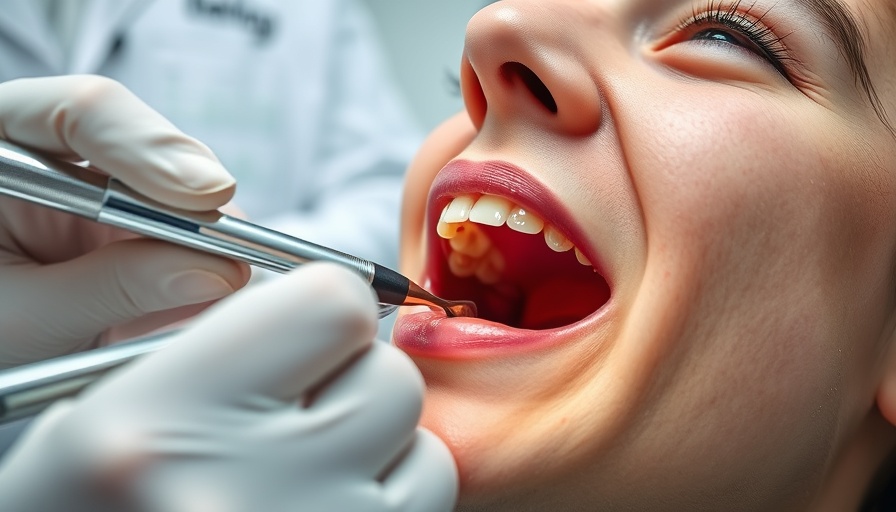
The Rise of Snus: A New Challenge for Oral Health
The emergence of 'snus' as a popular nicotine delivery method is raising serious concerns among dental professionals and health authorities alike. Unlike traditional smoking, snus consists of small pouches of tobacco that users place between their gums and lip, allowing nicotine to be absorbed rapidly into the bloodstream. This shift from cigarettes to products perceived as safer is particularly prevalent among teenagers and young adults, who find these flavored pouches more appealing. However, the transition to snus does not come without risks. As highlighted in a recent BBC article, snus users are often inadequately informed about the oral health consequences that can arise from regular use.
Understanding the Risks: More Than Just a Smoky Alternative
While snus may be marketed as a less harmful option compared to smoking cigarettes, research suggests otherwise. At Foxhall Dental Practice, we emphasize that the method of use places snus directly in contact with the delicate tissues of the gums, leading to potential long-term damage. Nicotine constricts blood vessels in the gums, diminishing blood flow necessary for tissue health, which can ultimately result in gum disease and tooth loss.
The Localized Impact on Gum Health
One critical aspect of snus use that has emerged is the localized impact on oral health. Users often place the pouch in the same spot, leading to concentrated exposure of the gums and surrounding areas. This localized application not only elevates the risk of gum disease but can also lead to severe complications such as bone loss around teeth, potentially necessitating dental interventions. With alarming reports of gum tissue peeling away and exposing tooth roots, it is imperative that users become educated about the long-term effects of their choices.
Implications for Dental Procedures: Why Snus Users Face Tougher Challenges
For those opting for dental implants, quitting smoking is standard advice for promoting healthy integration with bone. However, the use of snus complicates matters. Even though users may switch to snus thinking they are making a safer choice, the localized absorption of nicotine poses similar threats as traditional cigarettes, impeding healing post-surgery. Patients need to consult with their implant dentists about safe nicotine alternatives or seek comprehensive management strategies.
Understanding Regulations and Accessibility: A Public Health Concern
The regulatory environment surrounding snus is also a significant factor. Its low cost and ease of access make snus an attractive option for youth. Priced significantly cheaper than cigarettes, around £5 for twenty pouches, the financial barrier to obtaining these products is almost non-existent. This has led to an alarming rise in consumption among adolescents, which could pave the way for future health crises if not addressed.
Preventive Measures and Awareness: Taking Charge of Oral Health
Education and awareness are paramount in combating the rising trend of snus use. Communities need to increase understanding of how nicotine impacts oral health, emphasizing that relapsing into snus use is not a viable solution for those trying to quit cigarettes. There are numerous resources available for individuals looking to quit nicotine altogether, including nicotine patches that have a systemic effect rather than localized, providing a safer alternative during the cessation process.
Take Action: Prioritize Your Oral Health
As the landscape of nicotine consumption evolves, the importance of prioritizing oral health is more critical than ever. If you or someone you know uses snus or other nicotine products, consider taking proactive steps to mitigate risks, including consulting with your dental health provider. Recognizing the dangers and making informed choices can significantly enhance your quality of life and health outcomes.
 Add Row
Add Row  Add
Add 




Write A Comment